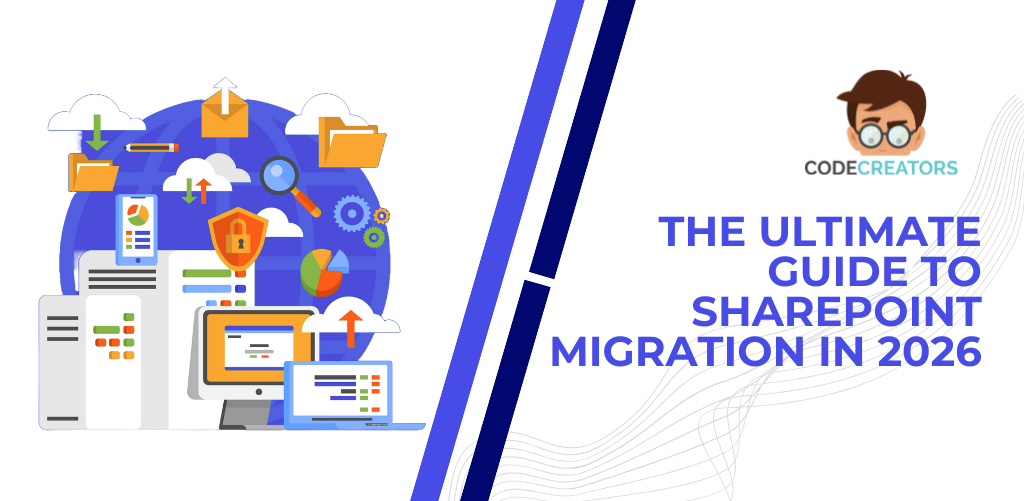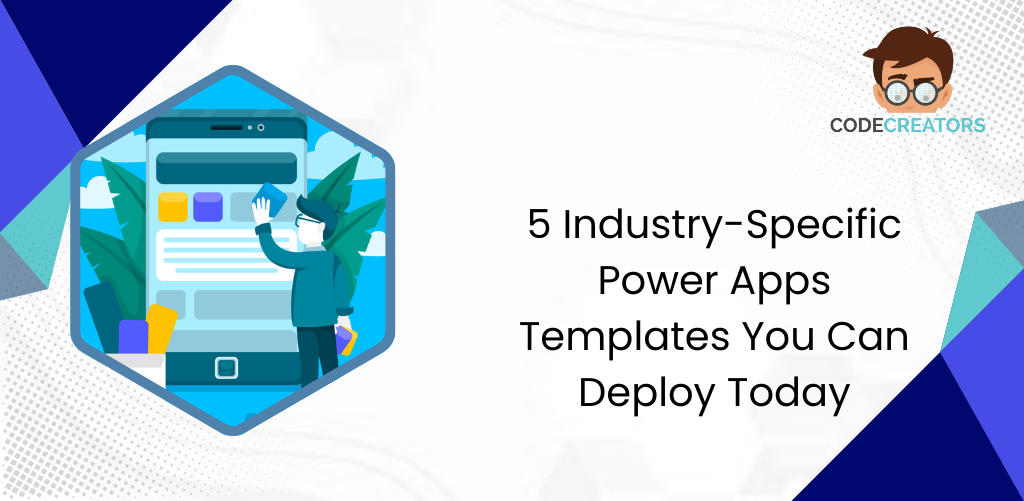Data Strategy for Power Apps: Using Dataverse, Teams and SharePoint as Backends

As you design an application using Power Apps Microsoft, you select a data source, the “backend” on which the application will store its information. But that selection is the most important thing you will decide about your data strategy since that will affect an app’s scalability, security, and licensing costs. SharePoint, Teams, utilizing Dataverse for Teams, and the full Dataverse are the most common backends. Each comes with its strengths and weaknesses, so understanding these will help in the creation of successful examples of Power Apps and ensure the solution’s long-term success.
Understanding What is Microsoft Power Apps and Data
At its core, what is Power Apps? It’s a low-code platform to help business users and developers make an application customized to solve specific business problems. The apps themselves do not store the data; they act as the user interface to read and write data that is stored somewhere else. When you create a new app in Power Apps Studio, you immediately choose the backend connection. The right backend aligns with your app’s complexity and your users’ licenses.
Option 1: SharePoint – The Simple and Accessible Backend
It is the most common starting point in building Power Apps examples, since just about all Microsoft 365 organizations have it.
Strengths:
- Ease of Use: SharePoint Lists are familiar to both users and easy to create and manage, while you connect the app to the list in a few seconds in PA Studio.
- Licensing: SharePoint only needs the standard license for Microsoft 365, such as E3/E5. It does not need the Power Apps Premium license, making it the most cost-effective solution for basic apps.
- Document Integration: SharePoint is great at managing documents. If your application needs to handle documents like attaching pictures to forms, for instance, then SharePoint would offer seamless integration with its libraries.
Weaknesses and Limitations:
- Scalability: SharePoint Lists poorly support more than 5,000 items before the list view threshold is hit. Advanced filtering or sorting creates delegation warnings and performance problems. This makes it unsuitable for apps with high data volume-say, inventory management.
- Security: Security depends upon the SharePoint permission model, which can become complex and fragile when you handle item-level security.
- Relational Data: SharePoint isn’t great for complex relational data (where one record links to many other records). You manage the relationships manually by using lookup columns, which can get very messy.
Ideal Use Case:
The simple examples of the PA would be a leave request form for an employee, a team asset tracker with fewer than 3,000 items, or a basic checklist where data volumes are low and relational complexity is minimal. For simple apps with low data volume and simple data structures, SharePoint is best suited.
Option 2: Dataverse for Teams – The Mid-Range, Collaborative Backend
Dataverse for Teams is a streamlined, free version of the full Dataverse, which runs in the context of Microsoft Teams. If you create an app directly within a Team, you will implicitly use this backend.
Strengths:
- Relational Data: Dataverse for Teams provides true relational database capabilities, including tables, columns, relationships, and security roles. It handles complexity that SharePoint cannot.
- Licensing: Dataverse for Teams comes with most Microsoft 365 licenses and does not require the Power Apps Premium license. It provides a free, accessible path to a relational database backend.
- Teams Integration: Because it lives inside of Teams, it integrates perfectly with Teams features, such as notifications and chat. It provides up to 1 million rows of data storage per team.
Weaknesses and Limitations:
- Size Limits: It has a hard limit of 1 million rows per team environment. If your app needs enterprise-wide scale or very high volume, you must upgrade.
- Isolation: The data remains restricted to the Team in which the app was created and cannot be shared easily across other Teams or with outside systems.
- Power Apps Studio does not let you connect to Dataverse for Teams from the standard Studio. You have to build the app inside the Team context.
Ideal Use Case:
Mid-size Power Apps examples might be a departmental budgeting tool, a team project manager, or an internal FAQ tracker that needs a relational database, but confines usage to a single department. Dataverse for Teams is best for departmental relational apps with moderate data volume under 1 million rows.
Option 3: Dataverse (Full) – The Enterprise-Grade Premium Backend
The full Dataverse, formerly known as the CDS, is Microsoft’s own database service. It is a premium backend that requires a Premium license.
Strengths:
- Scalability: Dataverse scales to massive data volumes and provides the best performance for complex, large-scale Power Apps examples.
- Security: Provides granular, role-based security at the level of records and columns. This is important for complex enterprise apps with sensitive data that includes anything from HR records to financial information.
- Relational Power: Dataverse is built for relational data and handles complex entity relationships with ease.
- •Platform Integration: It integrates seamlessly with all components of the Power Platform, including Power Automate and Power BI, and Dynamics 365.
Weaknesses and Licensing:
- Licensing Cost: It requires the Premium license, which is a per-user or per-app plan. This adds significant licensing costs but increases enterprise capability.
- Complexity: The initial setup and security configuration are more complex than setting up a simple SharePoint list.
Ideal Use Case:
Examples of Enterprise Power Apps include full-scale inventory management-examples with more than 50,000 records, global asset tracking, or complex field service applications that require high security, massive scale, and integration across multiple business units. Full Dataverse is ideal for mission-critical, high-volume, enterprise-wide applications.
Data Strategy Summary and Power Apps Consulting Services
Backbone selection should be made based on the application’s complexity, not solely on the current Power Apps license your users have.
You need to upgrade your backend when:
- You reach the 5,000-item SharePoint delegation limit (migrate to Dataverse for Teams).
- Your app grows beyond the 1-million-row limit or needs company-wide sharing – use Full Dataverse.
- You require column-level security for sensitive data: Move to Full Dataverse.
- The backend complexity must match up against the complexity of the app, not just your users’ current Power Apps license.
Professional Power Apps consulting services help an organization effectively plan out this data strategy. Consultants analyze your app requirements, determine the correct backend, and, if needed, the Power Apps Premium license pathway that best fits, while also designing the optimal data model in Power Apps Studio for long-term scalability. They ensure your application fits current needs without setting your organization up for future architectural bottlenecks.
Conclusion
What is Microsoft Power Apps without a sound data strategy? It’s a risk. You will need to select the backend based on your application’s expected scale and complexity. SharePoint works for simple, low-volume PA examples. Dataverse for Teams is an excellent, free relational choice for small teams. Full Dataverse is a powerful, secure, and highly scalable enterprise solution that requires the Power Apps Premium license. Making the right choice actively in PA Studio means your Power Apps Microsoft solution will stay high-performing, secure, and cost-effective to support the growth of your business.
FAQs
Q: Why is the choice of the data backend so critical for a Power Apps Microsoft solution?
A: The choice of the data backend is critical because it determines the app’s long-term scalability, security model, and Power Apps license requirements. Choosing the wrong backend (like SharePoint for high volume data) causes performance issues, security gaps, and unnecessary costs later on.
Q: When should I choose the Power Apps SharePoint backend over Dataverse for Teams?
A: You should choose SharePoint when you build simple, low-volume Power Apps examples (under 5,000 items) that primarily require standard Microsoft 365 licensing. SharePoint is cost-effective and integrates well with document management, but it lacks true relational database power.
Q: What is the key advantage of using the full Dataverse backend over Dataverse for Teams?
A: The key advantage is enterprise scalability and security. The full Dataverse supports massive data volumes and provides granular, column-level security and enterprise-grade relational power. However, it requires the more expensive Power Apps Premium license.
Q: How do I know when I need to upgrade my backend and move to the Power Apps Premium license?
A: You know you need to upgrade when your app hits the 5,000-item delegation limit in SharePoint, exceeds the 1-million-row limit in Dataverse for Teams, or when you need the high security and complex relational features of the full Dataverse. This upgrade path requires the Power Apps Premium license.
Q: How can Code Creators help me with my Power Apps data strategy?
A: We provide Power Apps consulting services by analyzing your app’s requirements, expected data volume, and security needs. We design the optimal data strategy, help you choose between SharePoint, Teams, and Dataverse, design the relational data model in Power Apps Studio, and manage the secure connection and eventual migration to a Power Apps Premium environment, ensuring your Power Apps Microsoft solution is robust and scalable.


